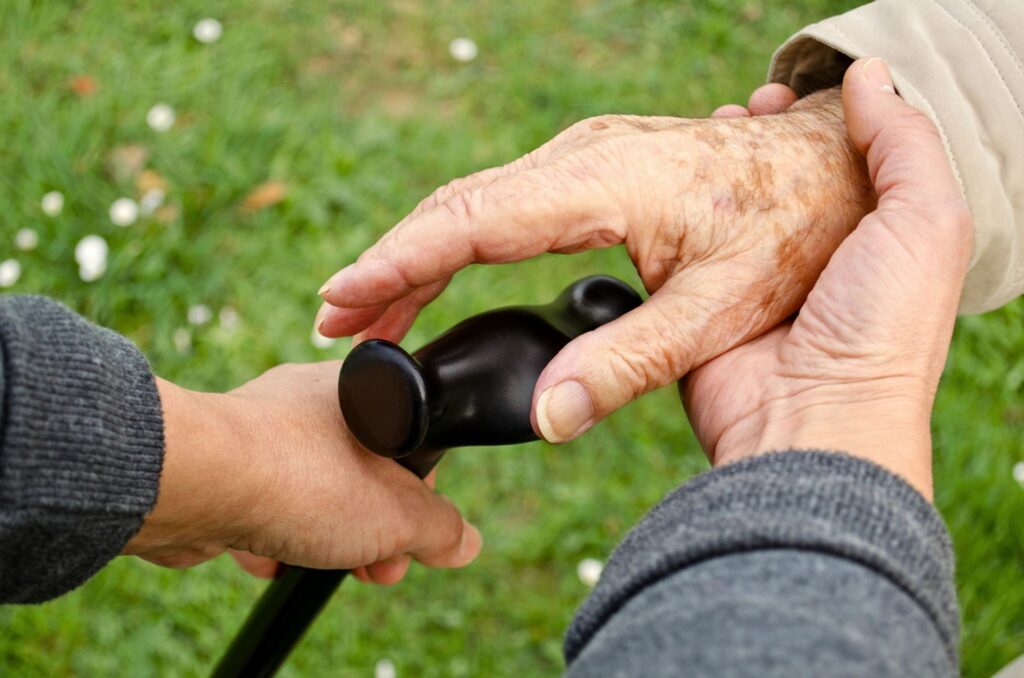The decision to choose Hospice can come with a host of questions and concerns. One such question is “Can a Hospice Patient go to the Emergency Room or Hospital?”. This is a rather complicated question with many variables. The short answer is yes; however, there are several guidelines surrounding this issue that determine whether a Hospice Patient can remain on service if they go to the ER or Hospital. A Hospice patient can choose at any time to go to an ER or a Hospital, but depending on the cause, it may be an out of pocket expense. Read on as we discuss in more depth reasons a Hospice Patient may go to the Hospital, Revoking Hospice Benefits, and the difference between Hospice Care and Hospital Care.
Three Reasons A Hospice Patient May Go To The ER Or Hospital
The following are some examples of why a Hospice patient may choose to go to the ER or the Hospital. This list is not exhaustive, and other conditions may apply. Please check with your Hospice Provider for specific information on ER visits and Hospitalization of the Hospice patient.
Illness Or Injury Unrelated To The Hospice Diagnosis
Life can be unpredictable. Accidents can happen at the worst of times. Illness can arise seemingly out of nowhere. Hospice patients are not immune to life’s pitfalls. Should a patient sustain an injury such as a broken bone, head concussion, or some other urgent medical need that is not related to their hospice diagnosis, then a hospital visit may be a covered benefit while on Hospice.
Additionally illnesses that aren’t caused by the condition that they were admitted to Hospice services for can also be a covered benefit. Check with your Hospice Nurse to ensure your family receives the proper information prior to calling 911. It is important for EMS, Hospitals, and Healthcare providers to understand that the patient is in Hospice to ensure correct coding for benefits to be considered for coverage.
Respite Care
Another reason a Hospice patient may need to go to a Hospital or other care facility is to obtain Respite Care. This can be a covered benefit to relieve caregiver burnout, or to provide continuous care if the main caregiver cannot do so for a brief period of time. It can happen for up to 5 days at a time and it is possible to receive respite care more than once on occasion. The care may take place in a hospital or other covered facility. Respite care services are arranged by your Hospice Provider. Typically the Hospice Nurse and Social Worker coordinate this.
To Obtain Curative Treatment- Revocation
When a patient has chosen comfort care with Hospice, it does not mean they cannot change their mind and return to traditional medical care. If a new treatment becomes available or a patient simply desires to resume seeking curative medical care for their terminal illness, they can do so by revoking Hospice Services. Certain conditions apply when returning to Hospice after revocation of benefits, so please check with your Hospice Provider for specific details.
Hospice Care Vs Hospital Care
Hospice Care Is Comprehensive
It is important to note that most care can be handled at home where the patient is the most comfortable. Relieving the burden of constant travel back and forth to medical appointments is one of the main reasons patients decide to enroll in Hospice. Another main reason that families choose Hospice Care is knowing they have 24 hour access to quality medical care when they need it. Most situations can be handled at home after hours via the on-call nurse providing detailed care instructions for symptom relief. If warranted, an after hour visit by the Hospice Nurse can also be arranged.
Hospice Care Is Provided At A Patient’s Home
While it is true that in order to qualify for Hospice Services, a patient must be certified with a terminal illness that may end life within six months, it is by no means inferior care. The focus of Hospice Care is not curative, meaning no traditional life prolonging treatment such as chemo or surgery are continued. Hospice Care is the primary care received at home and is directed at maintaining quality of life. One of the main goals of Hospice Care is to control symptoms which may arise and to ensure patient comfort. This care is provided directly to the patient in their own home, eliminating the need to travel to doctor appointments, testing facilities, and hospitals for healthcare.
A dynamic team of healthcare providers is assembled for each patient to create an individualized care plan to address their ongoing needs. The team typically consists of the Hospice Doctor, Hospice Nurse, Home Health Aide, Social Worker, and a Chaplain. As services are provided wherever the patient lives, care can continue seamlessly after the patient has become homebound and even bedbound. This is a major benefit and source of stress relief for the family knowing that as the patient weakens and is no longer able or desirous of leaving the house, the patient still has quality healthcare.
A Hospice Patient may choose at any time to resume traditional healthcare or to seek additional curative treatment and revoke Hospice services and return to their regular medical benefits. Also, under certain circumstances a Hospice patient may receive covered care in a Hospital or Treatment Facility if certain conditions apply. Respite care at a facility or Hospital can be arranged if needed and Hospice service can continue during this time. These services are all coordinated through the Hospice Provider.
Hospital Care Is Medical Treatment Provided At A Hospital Or Treatment Facility
The goals of traditional healthcare are typically restorative and curative, meaning great lengths are taken to sustain and prolong life. This treatment often includes medications, infusions, chemo, radiation, surgery, and other therapies. These treatments can take place in a variety of settings such as an Emergency Room during a life threatening situation, a treatment facility for chemo or radiation, or a Hospital for surgical procedures and other therapeutic interventions.
This care is aimed at preserving, restoring, maintaining, and curing. While it has its place, typically, the patient who chooses Hospice has exhausted many if not all the options that traditional medical care has to offer. When a patient is given a diagnosis of terminal illness and the prognosis reaches six months or less, medical providers will offer the option of Hospice Care for compassionate care at home.
Looking For Hospice In The Las Vegas Area
If you are in the Las Vegas area and are considering if Hospice Care is the right choice for you or your family member, contact us today so that we can answer all of your questions.
Author: Julie Chapman LVN is a nurse writer with a passion for nurturing people. With 14 years of experience, she has worked with various specialties; however, hospice is the niche she feels the most called to.






